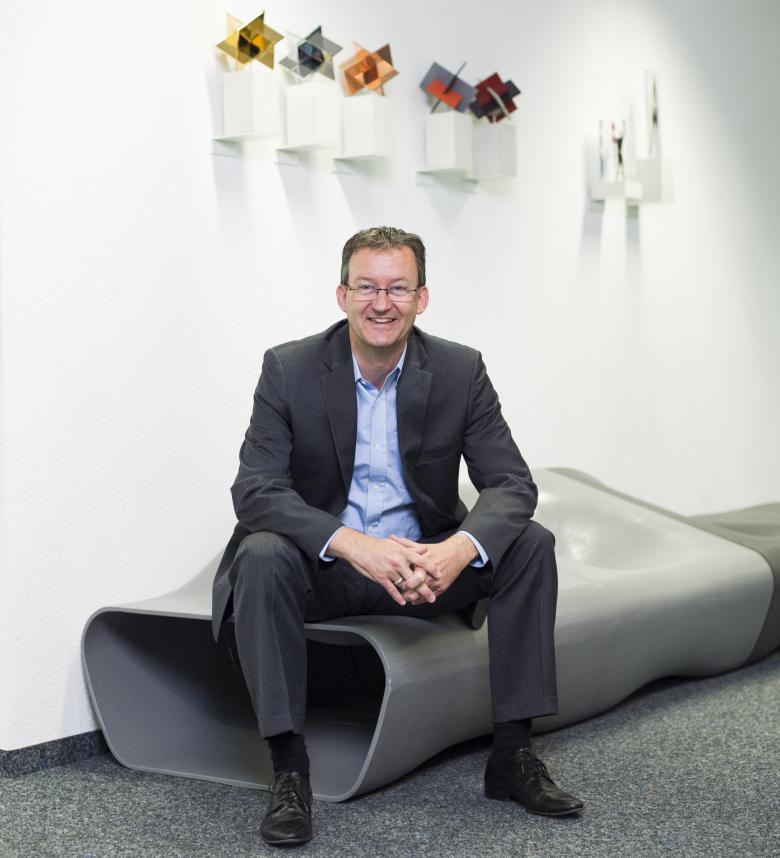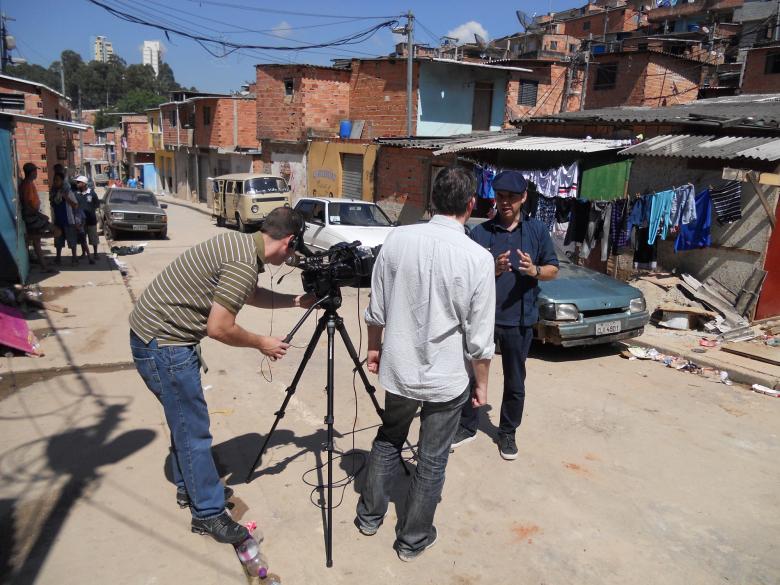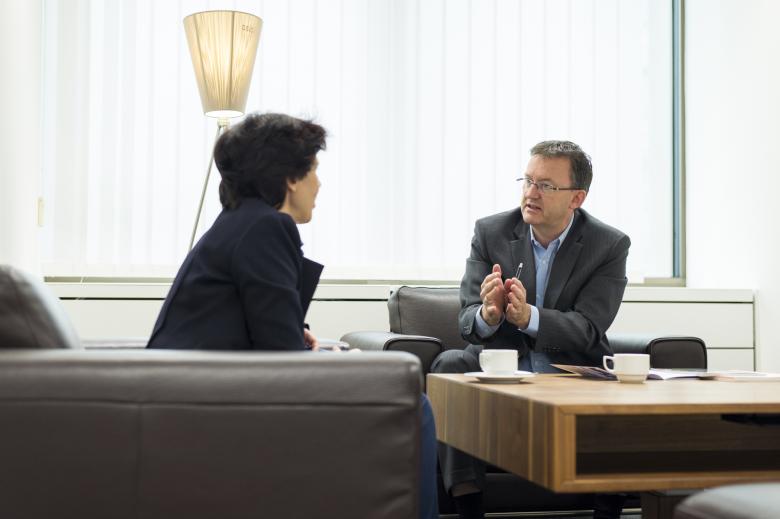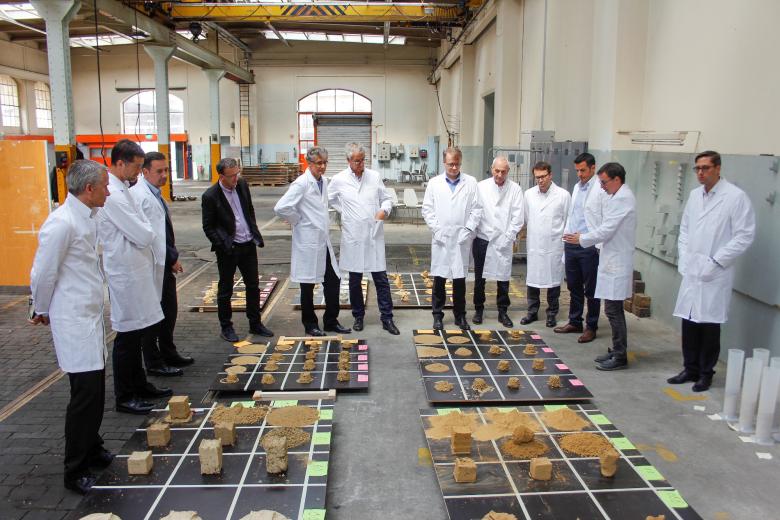On the Death of Edward Schwarz
Andreas Ruby
5. September 2022
Edward Schwarz, General Manager of the Holcim Foundation for Sustainable Construction, 2003-21. (Photo: Holcim Foundation for Sustainable Construction)
He was modest, warmhearted, and, in addition, a guiding intellectual force of sustainable construction who was full of enthusiasm and persuasive conviction. Edward Schwarz contributed greatly to Swiss and international architecture.
Ordinarily, obituaries are only written about especially renowned public figures. Most recently, Swiss-Architects published obituaries of Luigi Snozzi, Aurelio Galfetti, Martin Steinmann, and Silvia Gmür, all prominent protagonists of Swiss modern architecture. Edward Schwarz — who died entirely unexpectedly and far too young at the age of just 62 on August 3, 2022 — was neither an architect nor a prominent figure, yet it was precisely that sort of personal constitution that enabled him to make such incredible contributions to architecture in Switzerland and around the world.
For a good twenty years, Edward Schwarz guided the fortunes of the Holcim Foundation for Sustainable Construction as its general manager. The Foundation was established in 2003, long before the term sustainability became an integral part of the professional vocabulary of construction. The catalyst for its creation was a process of growing awareness among the owners of Holcim’s predecessor company, “Holderbank,” which was owned primarily by the Schmidheiny family. Holderbank had landed in the headlines in Latin America and other countries in the 1980s and 1990s, and had even been taken to court over repeated environmental damage involving asbestos contamination from the company’s production operations. Schmidheiny complied with the court-ordered compensatory measures and withdrew from asbestos processing. Stephan Schmidheiny, who had been deeply engaged in the preparations for the 1992 Earth Summit in Rio, the first UN Conference on Environment and Development, recommended that Holcim should, as a company, develop a fundamental and clear commitment to improving the relationship between construction and environmental protection. His writings on the subject of economic and environmental sustainability inspired the establishment of a foundation to promote and publicize knowledge of sustainable construction. To support the Foundation in its work, it was given extraordinarily generous financial resources, instantly making it one of the world’s leading philanthropic projects for environmentally responsible construction. Edward Schwarz, who until then had worked in the company’s communications department, was chosen, along with the foundation’s board of trustees and a Technical Competence Center (TCC) to develop the Foundation’s structure, mode of operation, and thematic focus — an enormous task, considering that there was no precedent at all for such a foundation and that it had to be created, as it were, out of thin air.
Edward Schwarz during an interview with Hubert Klumpner (Photo: Holcim Foundation for Sustainable Construction)
Fortunately, the founders had already made the most important decision at the outset: the word concrete does not appear in the Foundation’s declaration of purpose. Its work was not to be about concrete, but about how the act of building can be brought into harmony with our environment. In all his activities, Edward Schwarz upheld, with uncompromising clarity, this principled separation between Holcim as a company and the Holcim Foundation. This ethical consistency was eminently important for the Foundation’s very existence, because only in this way could it credibly refute, right from the start, the expected accusation of being a pure greenwashing tool. Edward Schwarz was always meticulous about ensuring that the Foundation’s projects were not defined by corporate interests. For example, he stipulated that the publications documenting the triennial international congress be produced by an independent editorial team. He also stipulated that the Holcim Awards would not be organized by in-house staff, but rather by an office that specializes in organizing competitions. He imposed the condition that the Technical Competence Center (or later the “Academic Committee”) should only comprise independent experts with no affiliations whatsoever to the company. In this way, he ensured that Holcim, as the benefactor, could not influence the substance of the Foundation’s work. This exemplary establishment of good governance is Edward Schwarz’s enduring legacy for the Foundation, and it would be of existential importance for its further development that Holcim preserves this legacy and sustains it with the same uncompromising integrity.
No matter how slick the stage may have been on which he professionally juggled his projects on a daily basis, between board meetings, CEO reports, and press releases, as a person and a colleague, Edward Schwarz was wonderfully uncomplicated, open, and accessible. He allowed everyone to simply call him “Edi,” and he always signed his letters and e-mails with “edi” — the lowercase “e” was quite deliberate, symbolizing the disarming humility with which he understood his role. He was too curious to understand the world, and too impatient to contribute something meaningful to its change, to waste his time on vanity and self-promotion. In his tenure as a journalist, he had acquired two virtues that would serve him well in his work for the Foundation: first, a feel for issues that demand our attention, and second, an ability to convey them in a way that makes even complex relationships comprehensible to a wide audience. The first virtue helped him to perceive and take seriously the issue of sustainability much earlier than most architects. The fact that he looked at building not from the bubble of architecture, but from the extroverted position of an informed outsider, contributed in no small way to ensuring that the Foundation’s agenda always remained one step ahead of the mainstream. And his second virtue, the ability to simplify, helped architects to avoid dismissing sustainability as an academic subject to be dealt with by special experts, and instead to see it as an integral architectural concern that must — and can — be mastered in terms of design and planning.
Edward Schwarz speaking with Susanne Sugimoto. (Photo: Holcim Foundation for Sustainable Construction)
When he began his work, he hardly knew any architects and engineers, so he sought advice from experts on the Academic Committee, colleagues, and friends, and over the years he got to personally meet the most influential figures in international architecture. He was proud that architects with whom he had worked intensively over the years in connection with the Holcim Forum and the Holcim Awards went on to become Pritzker Prize laureates: Alejandro Aravena, Anne Lacaton and Jean-Philippe Vassal, and most recently Francis Kéré. Meanwhile, he recognized, from very early on, the crucial role played by the younger generation of architects in bringing about a lasting turnaround in construction. One of the most important projects he launched was the “Next Generation Lab.” After the Foundation launched its “Next Generation Award,” Edi Schwarz suggested inviting the 53 award winners of the 2014 award to New York so they could get to know one another, share their experiences, and, above all, work together.
Planning and staging large-scale events was Edi’s forte. With his small team, he regularly accomplished the feat of organizing large conferences with precision and bringing together the assembled architectural prominence in one place for a few days. The Forum programs that he was instrumental in developing were legendary for their concentrated mix of lectures, workshop groups, exhibition openings, field trips, and informal discussions during coffee breaks, evening meals, and bus rides. In a time when an ever greater proportion of our communication takes place virtually, physical encounters become more important and more precious; Edi knew this and created countless opportunities for such encounters.
Photo: Holcim Foundation for Sustainable Construction
Even when Edi was mainly busy with solving organizational problems at these events — he was a highly gifted troubleshooter who was at his best when plan B failed to work and he conjured up an unconventional special solution in classic MacGyver style — he was always attentive to the substantive issues at these events. With a fine antenna, he detected new topics when they emerged in the discourse and was able to react to them. While the debate on sustainability had long focused primarily on energy issues, Edi Schwarz sensed early on that it would become at least as important to raise the issue of materials and to address the material cycle of building. Where does the material we use to build come from, what does it do to us and the world, and where does it go? This focus found expression in the 2019 Holcim Forum in Cairo, which subjected the entire material basis of construction to scrutiny under the title “Re-materializing Construction.” This new thematic framing was quite awkward for Holcim because it related to the company’s business model. This became apparent in 2017 when Holcim’s then-CEO Eric Olsen was asked in an interview whether the company would supply cement for President Donald Trump’s infamous wall on the border between Mexico and the US, and he failed to give a clear answer. Edi Schwarz then wrote a memorandum to the company’s management together with Rolf Soiron, then chairman of the Foundation’s board of trustees, stating that Holcim could not supply cement for such an unethical project. This is merely one of many examples showing how, under Edi’s leadership, the Foundation influenced the company’s self-image and defined ethical standards for sustainable construction in the 21st century that could not be ignored by the industry. He realized earlier than others in the construction sector that we have absolutely no alternative to sustainability, and that it is simply the sine qua non of our existence. Along the lines of the aphorism “constant dripping wears away the stone,” he used a mixture of subtle renitence and tactical finesse to instill this insight into the brains of decision makers in construction and politics. He did everything but spare himself in the process and worked like someone who went berserk, traveling almost incessantly from one continent to the next in order to organize an awards presentation in Jakarta or a forum in Mumbai and, in between, found opportunities on the plane and in the hotel to answer emails so reliably that the recipients thought he was writing them at his desk in Zurich.
His personality, which combined multifaceted talent and inexhaustible enthusiasm with personal modesty and warmheartedness, shaped the Holcim Foundation in a fashion that cannot be overestimated. We bid a sad farewell to a person who always took other people and other things to be more important than himself and who, for precisely that reason, is already so sorely missed.
This article originally appeared as "Zum Tod von Edward Schwarz" on Swiss-Architects. Translation by David Koralek / ArchiTrans.



